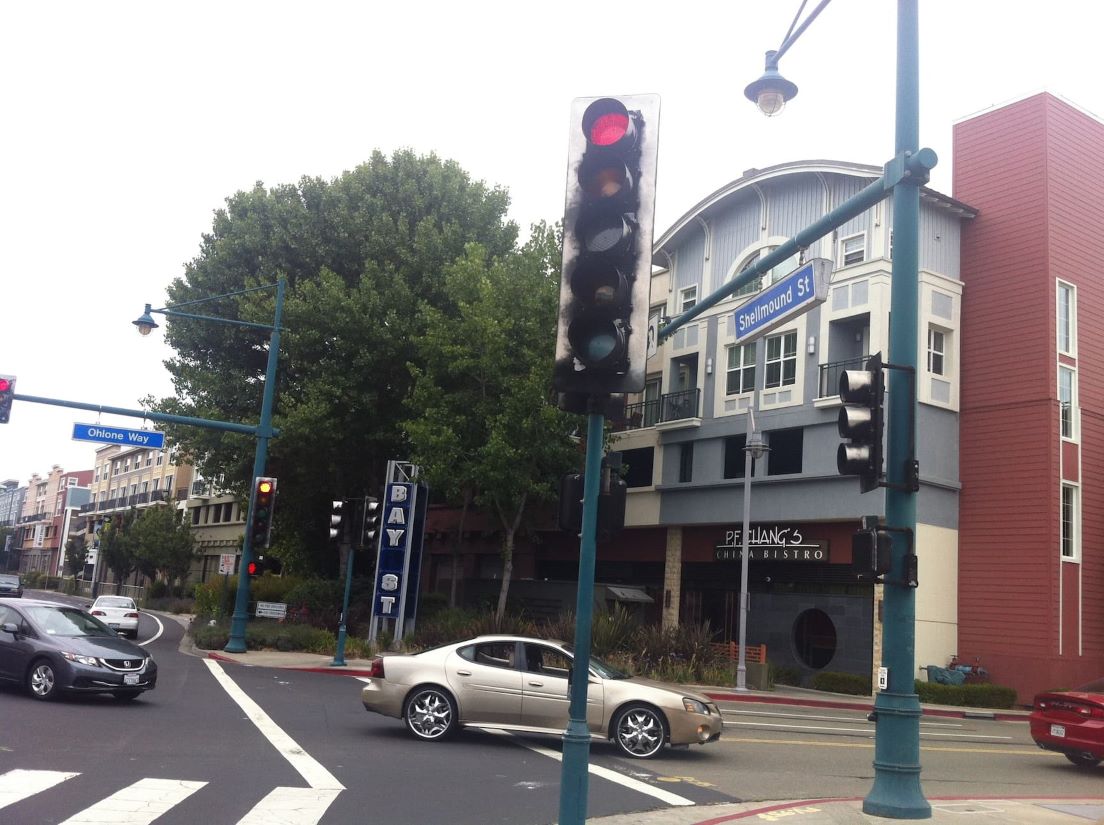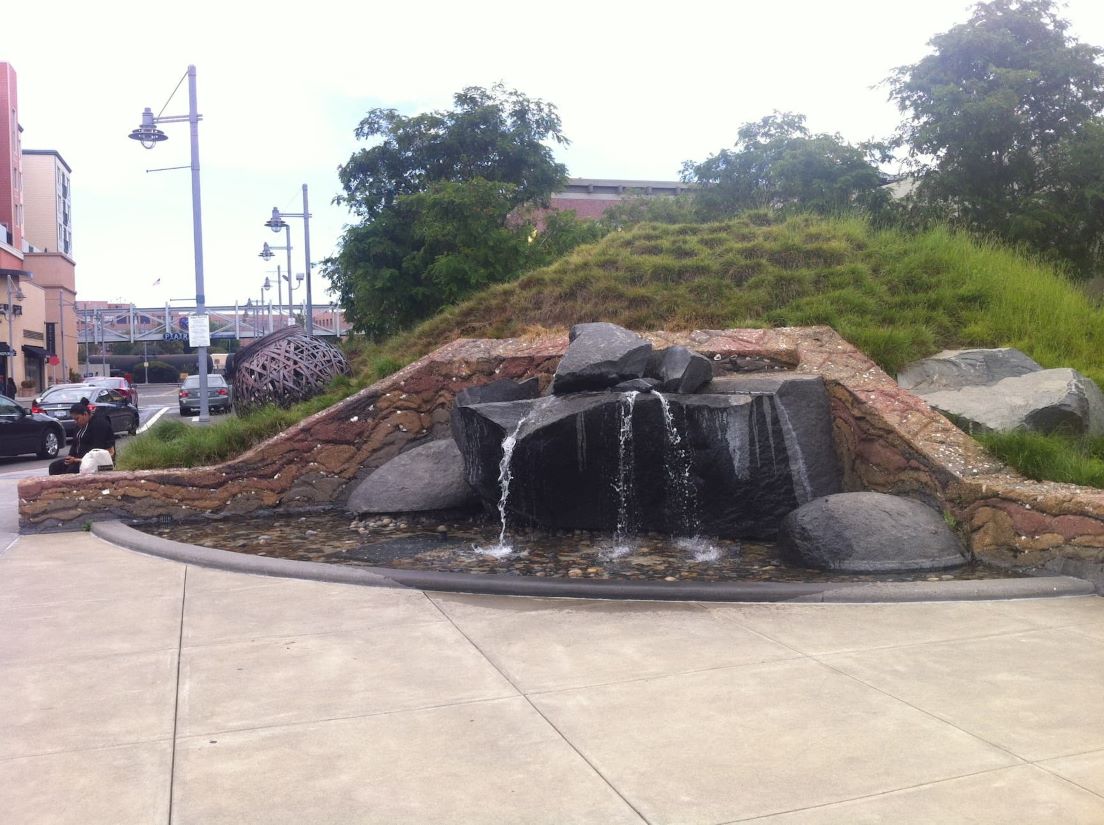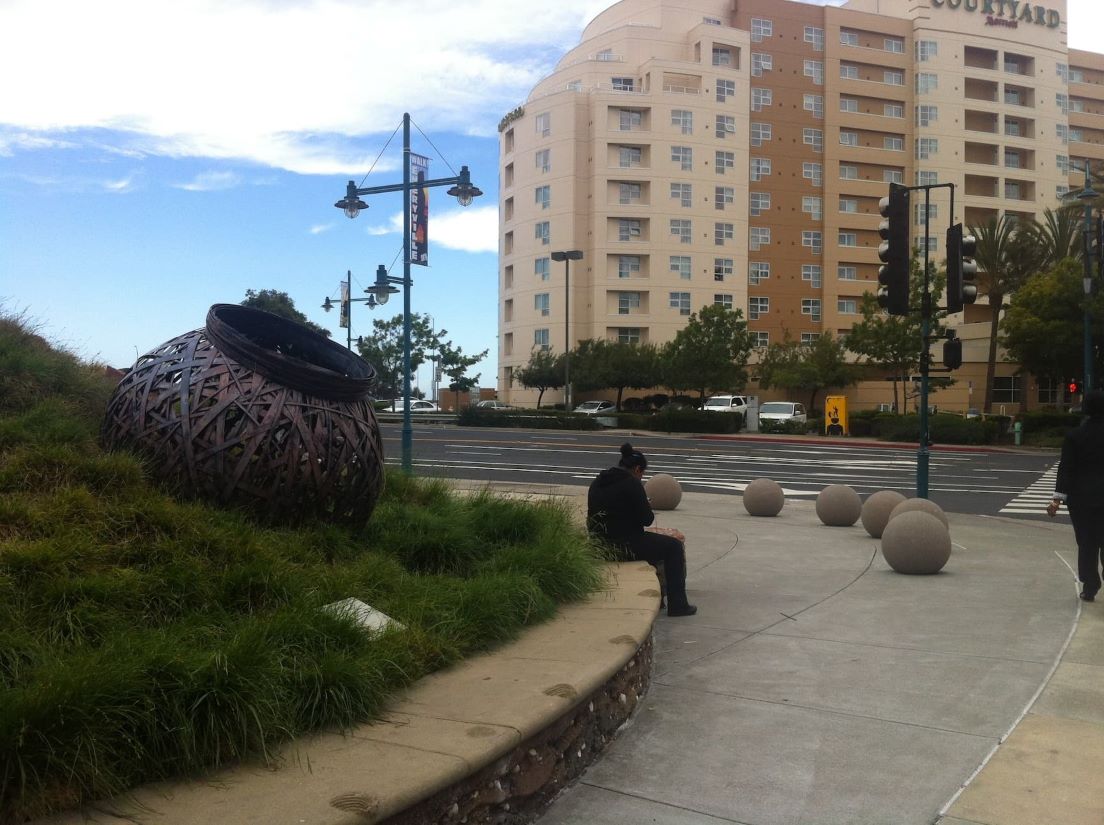Appendix
Photographs

Figure 1: Entrance to Bay Street at the corner of Shellmound Street and Ohlone Way

Figure 2: Ohlone Shellmound Memorial at Bay Street

Figure 3: The Ohlone Shellmound memorial with Shellmound Street behind it
Teaching Standards
Although this unit will be delivered within a Visual Arts context, it will be at the beginning of my district's exploration with the new Common Core Standards and I am very interested in finding ways to integrate these new teaching standards into my practice. As a Studio Thinking Framework Classroom, my students are very familiar with the eight Studio Habits of Mind and incorporate them into their daily studio practice. The Studio Habits of Mind are: Develop Craft, Engage and Persist, Envision, Express, Observe, Reflect, Stretch and Explore, and Understanding the Art World. Much of what the Studio Habits of Mind bring to my classroom is a language for us to communicate about our individual and collaborative learning experiences about art and through art making. The Studio Habits of Mind are a critical part of my classroom structure, however I often struggle to integrate them with the California State Standards for Visual Arts that are very focused on artistic technique. For this unit I am integrating both California Standards for Visual Arts and Common Core College and Career Readiness Anchor Standards for Speaking and Listening that integrate well into several of the Studio Habits of Mind.
California Standards for Visual Arts
Through an investigation of the social justice art movement in the Bay Area, students will interpret and derive meaning from the street art in the neighborhood of our school and identify how this work and the issues it raises connects to their own lives. 3.4 Discuss the purposes of art in selected contemporary cultures. While learning about the contemporary artist Mark Jenkins, students will deepen their understanding and scope of street and guerilla art and the impact Jenkins' work has on the public. Students will interpret photographs documenting his work in public spaces and discuss how his work draws viewers in to confront an issue. 1.3 Research and analyze the work of an artist and write about the artist's distinctive style and its contribution to the meaning of the work. Taking inspiration from Jenkins human sculptures, students will create gesture drawings and then packing tape molds of their bodies that reflect the impact of carrying the burden of a particular social issue personally on one's bones and muscles. 2.6 Create a two- or three-dimensional work of art that addresses a social issue. During and after working on their sculptures, students will need to examine closely the appropriate public space to install their work. As they do this they will have to consider the physical needs of their sculpture, who will view it, in what context, and what they anticipate the public reaction to their work. This process will help students become clear and aware of the message they are putting forth to their viewer and what they would like their viewer to take away from the work. 4.1 Articulate how personal beliefs, cultural traditions, and current social, economic, and political contexts influence the interpretation of the meaning or message in a work of art.
Common Core English Language Arts Standards: College and Career Readiness Anchor Standards for Speaking and Listening
Through partner chats, group discussions, and oral presentations, students will engage in a variety of conversations to stimulate their thinking and exchange ideas. CCSS.ELA-Literacy.CCRA.SL.1 Prepare for and participate effectively in a range of conversations and collaborations with diverse partners, building on others' ideas and expressing their own clearly and persuasively. By examining primary and secondary sources and conducting their own investigations to understand the history of Emeryville, students will use expand upon their repertoire of interpretative strategies. CCSS.ELA-Literacy.CCRA.SL.2 Integrate and evaluate information presented in diverse media and formats, including visually, quantitatively, and orally. While collecting data and information about their historical investigations, students will synthesize text and share their discoveries through partner chats and group discussions. CCSS.ELA-Literacy.CCRA.SL.4 Present information, findings, and supporting evidence such that listeners can follow the line of reasoning and the organization, development, and style are appropriate to task, purpose, and audience.
Studio Habits of Mind
As students create cast molds of their bodies using plastic wrap and packing tape, they will learn to apply the tape so that it captures the body's form and understand how to remove that form from their model without destroying that form. Develop craft: Learning to use and care for tools (e.g., viewfinders, brushes), materials (e.g., charcoal, paint). Learning artistic conventions (e.g., perspective, color mixing). When putting each body part together I anticipate that there will be times when body parts might not fit together or the impact of gravity on their sculptures will ask students to think flexibly to solve a problem. Engage and Persist: Learning to embrace problems of relevance within the art world and/or of personal importance, to develop focus and other mental states conducive to working and persevering at art tasks. Through out this unit students will need to imagine what a place might have looked, sounded, or smelled like to make sense of the different periods of time to do this they will often have to rely upon what they see in their mind to guide them to a better understanding. Envision: Learning to picture mentally what cannot be directly observed and imagine possible next steps in making a piece. While maintaining a sketchbook to document their Art Based Research, students will collect information, but also have to interpret to create new information visually. When students visit locations to create mind maps of their observations they are not simply copying what they see, rather they are interpreting what they have experienced and visually expressing it to communicate with others. Express: Learning to create works that convey an idea, a feeling, or a personal meaning. As artist researchers, students will consume information through observation of images, video, text, and site visits. By taking in information and looking more carefully that they had before or more thoroughly than others ever will students will noticed things they have never seen before and might very well have missed had they not observed carefully. Observe: Learning to attend to visual contexts more closely than ordinary "looking" requires, and thereby to see things that otherwise might not be seen. The journey of historical investigation and art making begs for personal reflection, through "in progress" critiques, checking for understanding activities, and written reflections students will become mindful of their work process and their personal growth through it. Reflect: Question & Explain: Learning to think and talk with others about an aspect of one's work or working process. Evaluate: Learning to judge one's own work and working process and the work of others in relation to standards of the field. Inevitably the art making process lends it self to experiences of the unknown, when the art making practice leads a student to a place they had never been or never thought existed. This path of exploration often leads one to great discoveries and as a teacher it is important to leave time within the class structure for this habit to thrive and help students embrace and acknowledge these moments. Stretch and Explore: Learning to reach beyond one's capacities, to explore playfully without a preconceived plan, and to embrace the opportunity to learn from mistakes and accidents.
Be the first to comment on this unit!

Comments: